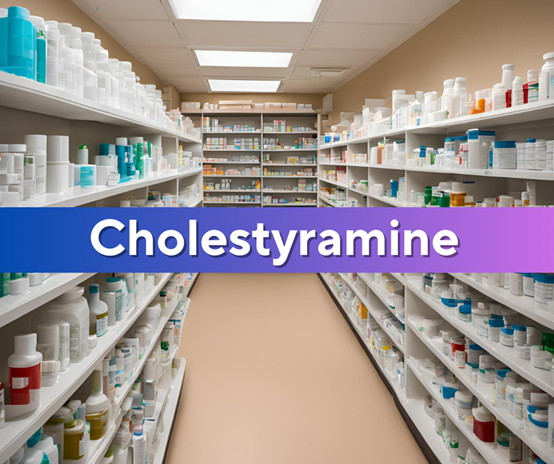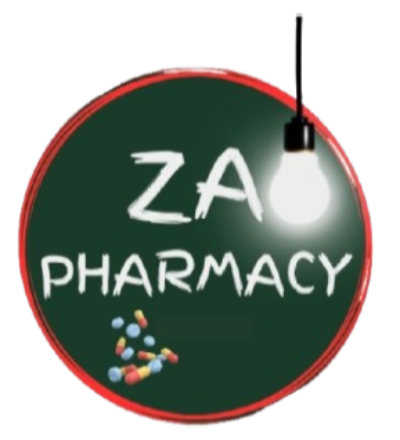Za Pharmacy
Drugs, Supplies and Delivery
Cholestyramine
Cholestyramine is a bile acid sequestrant that works by binding bile acids in the intestine, preventing their reabsorption. This forces the liver to convert more cholesterol into bile acids, thereby reducing circulating low-density lipoprotein (LDL) cholesterol. The process upregulates hepatic LDL receptors, enhancing clearance of LDL from the bloodstream. This mechanism is well-documented in the Lippincott Textbook of Pharmacology and Lange Basic & Clinical Pharmacology.
Cholestyramine is a bile acid sequestrant that works by binding bile acids in the intestine, preventing their reabsorption. This forces the liver to convert more cholesterol into bile acids, thereby reducing circulating low-density lipoprotein (LDL) cholesterol. The process upregulates hepatic LDL receptors, enhancing clearance of LDL from the bloodstream. This mechanism is well-documented in the Lippincott Textbook of Pharmacology and Lange Basic & Clinical Pharmacology.
- Hyperlipidemia: First-line therapy for primary hypercholesterolemia, particularly in patients intolerant to statins or as adjunctive therapy.
- Pruritus: Relieves itching associated with partial biliary obstruction (e.g., primary biliary cholangitis).
- Diarrhea: Manages bile acid malabsorption-induced diarrhea (e.g., post-ileal resection, Crohn’s disease).
- Off-Label: Occasionally used to bind toxins in Clostridioides difficile infection (British National Formulary [BNF]).
- Adults:
- Initial Dose: 4 g once or twice daily.
- Maintenance Dose: Gradually increase to 12–24 g/day in 1–4 divided doses.
- Administration:
- Mix powder with water, juice, or non-carbonated beverage.
- Take other medications 1 hour before or 4–6 hours after cholestyramine to avoid reduced absorption (BNF).
- Common:
- Gastrointestinal: Constipation, bloating, flatulence, nausea.
- Nutritional: Deficiencies in fat-soluble vitamins (A, D, E, K) with long-term use.
- Serious:
- Hypertriglyceridemia (may elevate triglycerides).
- Rare cases of intestinal obstruction or hyperchloremic acidosis (Lange Basic & Clinical Pharmacology).
- Contraindications: Complete biliary obstruction, bowel obstruction.
- Caution:
- Use in pregnancy requires monitoring for vitamin K deficiency (risk of neonatal bleeding).
- Avoid in severe renal impairment due to chloride load.
- Monitoring:
- Lipid profile (baseline and every 4–8 weeks).
- Vitamin levels (A, D, E, K) with prolonged use (BNF).
Cholestyramine binds to multiple drugs, reducing their absorption. Key interactions include:
- Warfarin: Reduced anticoagulant effect (monitor INR closely).
- Levothyroxine, Digoxin, Diuretics: Space doses 1 hour before or 4–6 hours after cholestyramine.
- Statins, Beta-Blockers, Antibiotics (e.g., tetracyclines): Potential reduced efficacy (Lippincott Textbook of Pharmacology).
- Generic Name: Cholestyramine.
- Brand Names: Questran (UK/US), Prevalite (US), Locholest (EU).
Conclusion
Cholestyramine remains a cornerstone therapy for hyperlipidemia and bile acid-related conditions. Its unique mechanism and safety profile make it suitable for statin-intolerant patients, though gastrointestinal side effects and drug interactions require careful management. Clinicians should adhere to guidelines from the BNF, Lippincott Textbook of Pharmacology, and Lange Basic & Clinical Pharmacology to optimize patient outcomes

